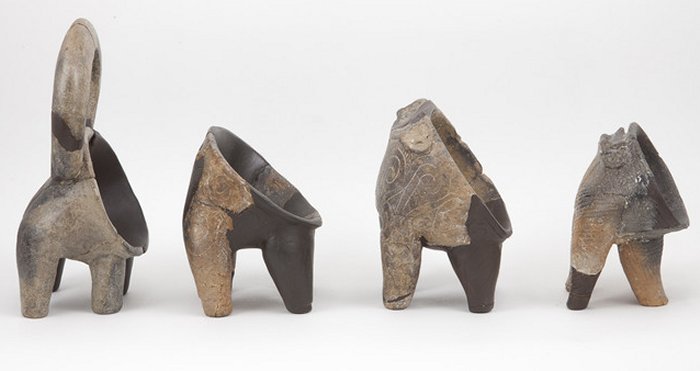AncientPages.com - It has long been known that cheese making dates back at least 5,000 years.
A new study revealed evidence of fermented dairy products -- soft cheeses and yogurts -- from about 7,200 years ago, according to an international team of researchers.
Analysis of fatty residue in pottery from the Dalmatian Coast of Croatia revealed evidence of fermented dairy products -- soft cheeses and yogurts -- from about 7,200 years ago, according to an international team of researchers.
"This pushes back cheese-making by 4,000 years," said Sarah B. McClure, associate professor of anthropology from Penn State University.
The presence of milk in pottery in this area is seen as early as 7,700 years ago, 500 years earlier than fermented products, said the researchers.
"First, we have milking around, and it was probably geared for kids because it is a good source of hydration and is relatively pathogen-free," said McClure. "It wouldn't be a surprise for people to give children milk from another mammal."
However, about 500 years later, the researchers see a shift not only from pure milk to fermented products, but also in the style and form of pottery vessels.
"Cheese production is important enough that people are making new types of kitchenware," said McClure. "We are seeing that cultural shift."
When only meat, fish and some milk residue is found in pottery, during the Early Neolithic, the pottery is a style called "Impressed Ware" found throughout the area.
500 years later, in the Middle Neolithic, Danilo pottery appeared and included plates and bowls. This pottery included three subtypes such as figulina makes up five percent of this type and is highly fired and buff-colored, often slipped and decorated; rhyta, which are footed vessels with round bodies and are often animal- or human-shaped, and on these vessels researchers found evidence of cheese. The third category of Danilo ware is sieves, which are often used in cheese-making to strain treated milk when it separates into curds and whey.
On three of the four sieves, there have been found evidence of secondary milk processing into either cheese or other fermented dairy products. Two sites in Croatia in Dalmatia were examined - Pokrovnik and Danilo Bitinj.
According to the researchers, dairying -- and especially cheese and fermented milk products -- may have opened northern European areas for farming because it reduced infant mortality and allowed for earlier weaning, decreasing the birth interval and potentially increasing population. It also supplied a storable form of nutrition for adults, because the fermentation of cheese and yogurt reduce the lactose content of milk products, making it palatable for adults as well as children.
AncientPages.com







